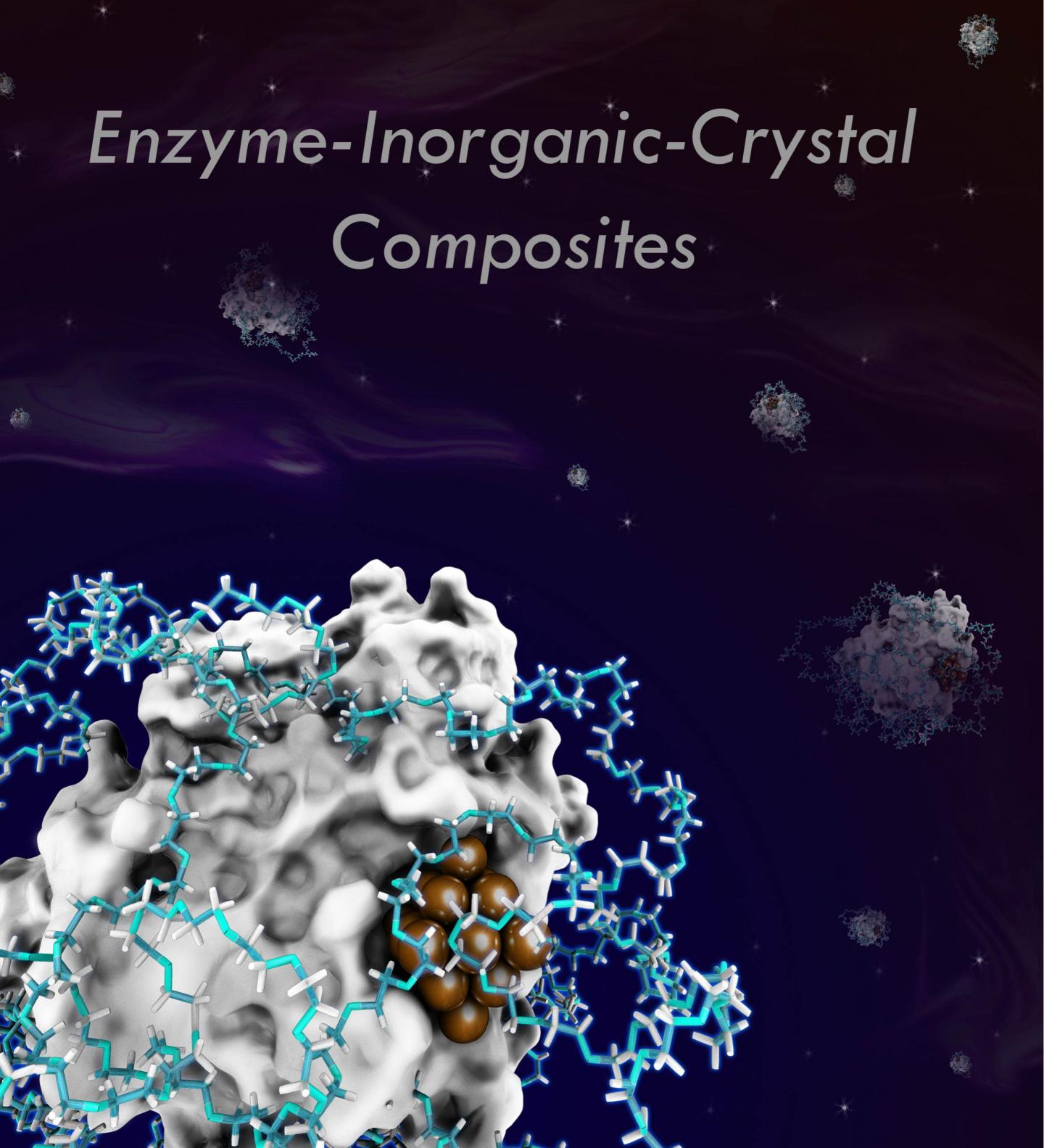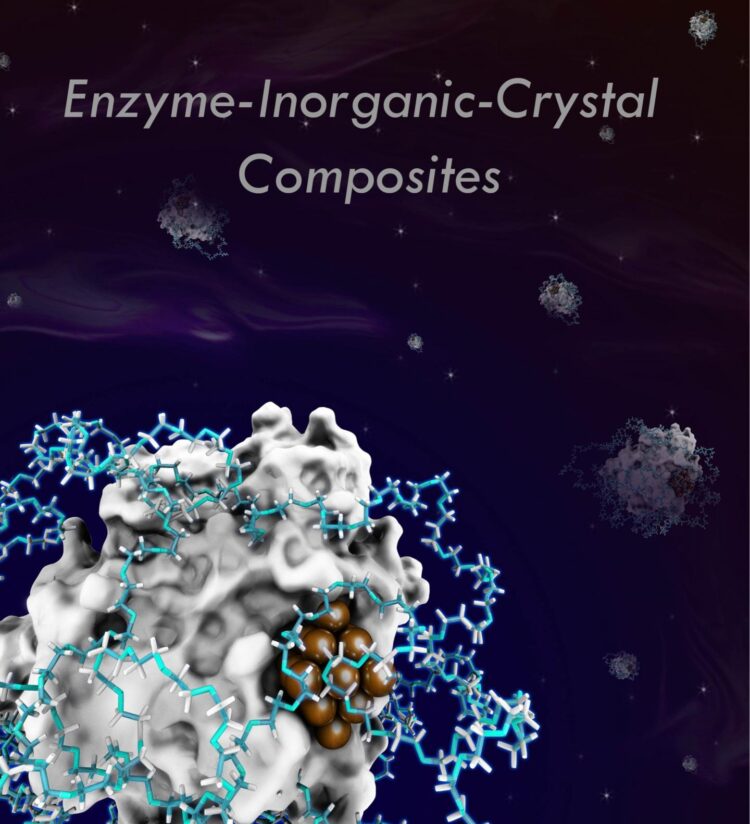
Credit: Chinese Journal of Catalysis
The two major challenges in industrial enzymatic catalysis are the limited number of chemical reaction types that are catalyzed by enzymes and the instability of enzymes under harsh conditions in industrial catalysis. Expanding enzyme catalysis to a larger substrate scope and greater variety of chemical reactions and tuning the microenvironment surrounding enzyme molecules to achieve high enzyme performance are urgently needed.
Recently, a research team led by Prof. Jun Ge from Tsinghua University, China reviewed their efforts using the de novo approach to synthesize hybrid enzyme catalysts that can address these two challenges and the structure-function relationship is discussed to reveal the principles of designing hybrid enzyme catalysts. The results were published in Chinese Journal of Catalysis.
In 2012, they first reported a coprecipitation method to prepare enzyme-inorganic-crystal composites. The coprecipitation method is general for preparing hybrid enzyme catalysts with various inorganic crystals, including MOFs. In 2014, they first proposed a coprecipitation strategy for directly synthesizing protein-embedded MOFs. The coprecipitation strategy for synthesizing enzyme-MOF composites is widely used in different types of MOFs, enzymes, proteins, DNA, siRNA, antibodies, and even cells. The mechanisms of enhancement of activity and stability of enzymes in the confined environment of MOFs were discussed. In addition to this, they constructed multienzyme-MOF composites to enhance the cascade reaction in a confined scaffold and developed a coarse-grained, particle-based model to understand the origin of the activity enhancement.
The apparent activity of enzymes in MOFs with a limited pore size is usually compromised when the enzyme substrate has a relatively high molecular weight. By introducing defects within the MOF matrix to generate larger pores, diffusional restrictions can be alleviated. Therefore, they developed methods for introducing defects into MOFs during coprecipitation. Tuning the concentration of precursors of MOFs, defected and even amorphous MOFs can be synthesized. These defects created mesopores in the composites, facilitated access of the substrates to the encapsulated enzymes and improved the apparent enzyme activity. The mechanism of defect generation was thoroughly studied and understood.
Moreover, instead of enzyme encapsulation, small inorganic crystals can grow in situ in a confined environment on the surface of an enzyme to combine enzymatic catalysis and chemocatalysis. They demonstrated how to construct an enzyme-metal hybrid catalyst to efficiently combine enzyme catalysis and metal cluster catalysis. Single lipase-polymer conjugates as confined nanoreactors were utilized for the in situ generation of Pd nanoparticles/clusters to accomplish chemoenzymatic dynamic kinetic resolution (DKR) of amines. The distinct size-dependent activity of Pd nanoparticles was observed. Experiments and simulations suggested that the engineering of the oxidation state of Pd plays an important role in the activity of Pd in the hybrid catalyst. This strategy for constructing enzyme-metal hybrid catalysts with excellent compatibility between enzymatic and metal-catalytic activities leads to many potential applications in chemical industry.
###
This work was supported by the Beijing Natural Science Foundation (JQ18006), the National Key Research and Development Plan of China (2016YFA0204300) and the National Natural Science Foundation of China (21622603, 21878174, 21911540467).
About the Journal
Chinese Journal of Catalysis is co-sponsored by Dalian Institute of Chemical Physics, Chinese Academy of Sciences and Chinese Chemical Society, and it is currently published by Elsevier group. This monthly journal publishes in English timely contributions of original and rigorously reviewed manuscripts covering all areas of catalysis. The journal publishes Reviews, Accounts, Communications, Articles, Highlights, Perspectives, and Viewpoints of highly scientific values that help understanding and defining of new concepts in both fundamental issues and practical applications of catalysis. Chinese Journal of Catalysis ranks among the top six journals in Applied Chemistry with a current SCI impact factor of 8.271. The Editors-in-Chief are Profs. Can Li and Tao Zhang.
At Elsevier http://www.
Manuscript submission https:/
Media Contact
Fan He
[email protected]
Original Source
http://doi.
Related Journal Article
http://dx.





